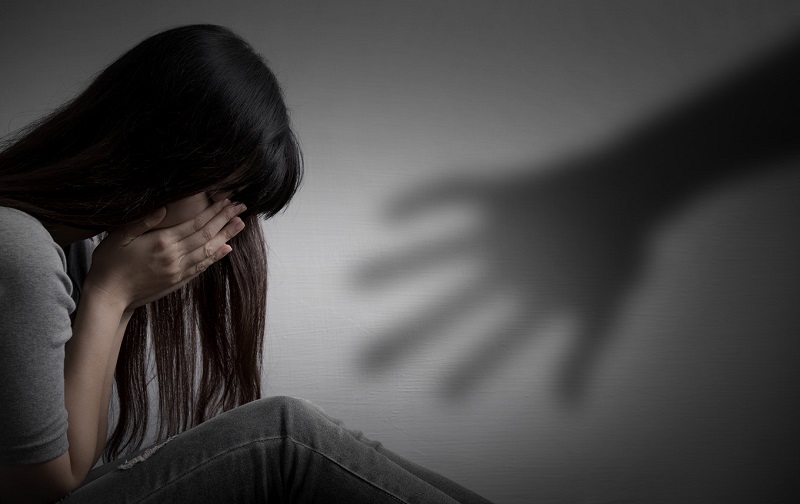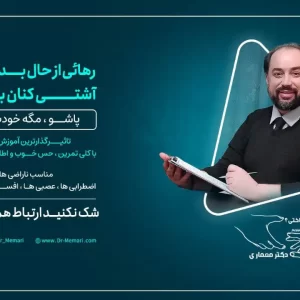بررسی وضعیت دختری بنام سارا با ترومای تجاوز و ارائه راهکار درمانی (پارت5)
این شرایط برای امثال سارا ممنوع است؟

- خود را مقصر همه چیز دانستن و فرار از جمعیت.
- ورزش نکردن و عدم دریافت غذای سالم و نرسیدن به خود.
- قرار نگرفتن در معرض موقعیت هایی که در گذشته مرا دچار ترس می کرد.
- خوابیدن زیاد و درپوش گذاشتن به افکار و مسائل.
- پاسخ منفی به خواستگارها و ترس از بیان
قابل توجه است سارا با توجه به شرایط زندگی خود می تواند لیست را طولانی کند. از سارا می خواهیم صادقانه پاسخ دهد اگر این ممنوعه هارا انجام دهد چه اتفاقی می افتد؟
-
چه زمانی سارا دیگه کم کم نیازی به جلسه مشاوره ندارد؟
سارا جان مثل قبل با خودت صادق باش!
زمانی که سارا ما به اهداف خود (فائق آمدن به افکار منفی و ترس از بیان خویش) دست پیدا کند و خود نیز این را صادقانه بیان کند، زمانی که بتواند فنون بیان شده را هروز و به صورت آگاهانه در زندگی عادی خود انجام دهد، زمانی که بتواند از بهزیستی و فرمول آن استفاده کند و زمانی که به یک آرامش نسبی از انجام فعالیت ها دست پیدا کند به تدریج جلسات حضوری درمان با وی کمتر می شود. سارا به صورت آنلاین می تواند گزارش کار دهد و باید متسمر ادامه دهد زمانی که این فرمول و فعالیت ها تبدیل به اصول زندگی وی قرار گیرد سارا ما می تواند به زندگی خود با تدوین روش جدی ادامه دهد. جون جونی من کنارتم…
جمع بندی و نتیجه گیری
یادتون هست؟ مراجع مورد نظر ما سارا 27 ساله ای بود که در دوران نوجوانی مورد تجاوز جنسی از سوی مرد همسایه و در حضور مادرش قرار گرفته بود. سال ها از این موضوع گذشته ولی سارا ما هنوز با ترس، نگرانی و اضطراب بعد از سانحه زندگی می کند. بیشترین ترس سارا از ازدواج نکردن و قضاوت شدن از سمت طرف مقابل خویش بود. ما در این انتظار می رود با این فرایند درمان سارا آرامش و ارزشمندی را بذرگذاری کند و باورها و ترس های منفی خود را کنار بزند و با فرمول زندگی سالم و شاد به زندگی خود ادامه دهد. شک نکنید! ارتباط همه چیز است…
دکتر معماری:
همیشه تصمیمی متفاوت تر و بهتر هست…
پس میتونی تصمیمی خاص تر از قبل بگیری…
مگه خودت چته؟!
مگه من مردم ؟!

www,Dr-Memari.com
منابع مورد استفاده:
- Richardson, G., Kelly, T. P., Graham, F., & Bhate, S. R. (2004). A personality based taxonomy of sexually abusive adolescents derived from the Millon Adolescent Clinical Inventory (MACI). British Journal of Clinical Psychology, 43, 285−298.
- Ward, T., Hudson, S. M., Johnston, L., & Marshall, W. L. (1997). Cognitive distortions in sex offenders: An integrative review. Clinical Psychology Review, 17, 479−507
- Bornstein R. Interpersonal dependency in child abuse perpetrators and victims: A metaanalytic review. Journal of Psychopathology and Behavioral Assessment. 2005;27(2):67-76.
- Jewkes R ,Levin J, Mbananga N, Bradshaw D. Rape of girls in South Africa. The Lancet. 2002;359(9303):319-20
- Haile R, Kebeta N, Kassie G. Prevalence of sexual abuse of male high school students in Addis Ababa, Ethiopia. BMC international health and human rights.24 :)1(13;2013 .
- Bifulco A, Bernazzani O, Moran P, Jacobs C. The childhood experience of care and abuse questionnaire (CECA. Q): validation in a community series. British Journal of Clinical Psychology. 2005;44(4):563-81
- Centers for Disease Control and Prevention (2007) Understanding sexual violence: Fact Sheet.
- Campbell R, Dworkin E, Cabral G (2009) An ecological model of the impact of sexual health on women’s mental health. Trauma Violence Abuse 10(3): 225-246.
- Campbell R, Wasco SM (2005) Understanding rape and sexual assault: 20 years of progress and future directions. J Interpers Violence 20(1): 127-131.
- Elliott DM, Mok DS, Briere J (2004) Adult sexual assault: Prevalence, symptomatology, and sex differences in the general population. J Trauma Stress 17(3): 203-211.
- Rothbaum B, Foa E, Riggs D, Murdock T, Walsh W (1992) A Prospective Examination of Post-traumatic Stress Disorder in Rape Victims. J Trauma Stress 60: 748-756.
- Tjaden P, Thoennes N (2000) Extent, Nature, and Consequences of Intimate Partner Violence. Findings From the National Violence Against Women Survey. NIJ, Washington 1-55.
- . Briere J, Jordan CE (2004) Violence against women: Outcome complexity and implications for treatment. J Interpers Violence 19(11): 1252-1276.
- . Kendall Tackett KA, Williams LM, Finkelhor D (1993) Impact of sexual abuse on children: A review and synthesis of recent empirical studies. Psychol Bull 113(1): 164-180.
- Chen LP, Murad MH, Paras ML, Colbenson KM, Sattler AL, et al. (2010) Sexual abuse and lifetime diagnosis of psychiatric disorders: systematic review and meta-analysis. Mayo Clin Proc 85(7): 618-629.
- Gilbert R, Spatz Widom C, Browne K, Fergusson D, Webb E, et al. (2009) Burden and consequences of child maltreatment in high-income countries. Lancet 373(9657): 68-81.
- Chivers Wilson KA (2006) Sexual assault and posttraumatic stress disorder: A review of the biological, psychological and sociological factors and treatments. McGill J Med 9(2): 111-118
- . Petrak J (2002) The trauma of sexual assault: Treatment, prevention and practice. West Sussex: John Wiley & Sons, pp 372.
- . Astbury J (2006) Services for victim/survivors of sexual assault: Identifying needs, interventions and provision of services in Australia. ACSSA 6.
- Crome SA, McCabe MP (1995) The impact of rape on individual, interpersonal and family functioning. J Fam Stud 1(1): 58-70.
- Wasco SM (2003) Conceptualizing the Harm done by Rape: Applications of Trauma Theory to Experiences of Sexual Assault. Trauma Violence Abuse 4(4): 309-322
- Stepakoff S (1998) Effects of sexual victimization on suicidal ideation and behaviour in U.S. college women. Suicide Life Threat Behav 28(1): 107-126.
- . Petrak J (2002) The trauma of sexual assault: Treatment, prevention and practice. West Sussex: John Wiley & Sons.
- . Morrison ZA, Quadra, Morrison AR, M Ellsberg, S Bott (2007) Addressing gender-based violence: a critical review of interventions. World Bank Res Obser 22(1): 25-51.
- Littleton H, Breitkopf CR (2006) Coping with the experience of rape. Psychol Women Q 30(1): 106-116.
- . Bonomi A, Anderson M, Rivara F, Thompson R (2007) Health outcomes in women with physical and sexual intimate partner violence exposure. J Womens Health 16(7): 987-997.
- Surís A, Lind L, Kashner TM, Borman PD (2007) Mental health, quality of life, and health functioning in women veterans: Differential outcomes associated with military and civilian sexual assault. J Interpers Viol 22(2): 179 -197.
- Campbell R, Lichty LF, Sturza M, Raja S (2006) Gynecological health impact of sexual assault. Res Nurs Health 29(5): 399-413.
- Beck, J. (2011). Cognitive behavior therapy: Basics and beyond (second edition). New York: Guilford Press.
- Burns, D. (2013, October 3). The ten worst errors therapists make, and how to avoid them. Feeling good: A webpage of David D. Burns, MD [Blog].
- Clark, D.A. (1999). Anxiety disorders: Why they persist and how to treat them. Behaviour Research and Therapy 37, S5±S27.
- Clark, D.A. & Beck, A. (2010). Cognitive theory and therapy of anxiety and depression: Convergence with neurobiological findings. Trends in Cognitive Science, 14(9), 418-24.
- Otto, M., Smits, J., & Reese, H. (2004). Cognitive-behavioral therapy for the treatment of anxiety disorders. Journal of Clinical Psychiatry, 65(5), 34–41.
- Jokic´-Begic´, N. (2010). Cognitive-behavioral therapy and neuroscience: Towards closer integration. Psychological Topics, 19(2), 235–254. Chapter 2
- Hara, K. M., Aviram, A., Constantino, M. J., Westra, H. A., & Antony, M. M. (2016). Therapist empathy, homework compliance, and outcome in cognitive behavioral therapy for generalized anxiety disorder: Partitioning within- and between-therapist effects. Cognitive Behavior Therapy, 15, 1–16.
- Teding van Berkhout, E., & Malouff, J. M. (2016). The efficacy of empathy training: A meta-analysis of randomized controlled trials. Journal of Counseling Psychology, 63(1), 32–41. Doi: 10.1037/cou0000093. Epub 2015 Jul 20.
- Szymanski, J. (2012). Using direct-to-consumer marketing strategies with obsessivecompulsive disorder in the nonprofit sector. Behavior Therapy, 43(2), 251–256. Doi: 10.1016/j.beth.2011.05.005. Epub 2011 Jun
- LeBeau, R. T., Davies, C. D., Culver, N. C., & Craske, M. G. (2013). Homework compliance counts in cognitivebehavioral therapy. Cognitive Behaviour Therapy, 42(3), 171–179.
Wolpe, Joseph (1969). The practice of behavior therapy, New York: pergamon press. Chapter 4




